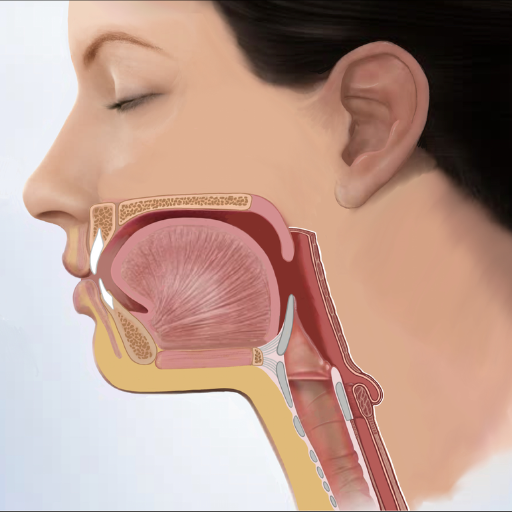
Together with the most usual practice of swallowing pills, there is a small number of the global population that experiences a challenge we know as pill dysphagia. This condition refers to swallowing impairment with respect to medications and it can, therefore, result in reduced compliance with the medication as well as consequent impacts on health outcomes. In this article, we will consider the pathways that may underpin the challenges associated with swallowing pills, suggest approaches that allow easier swallowing of oral tablets, and provide evidence-based best practices to counter and manage pill dysphagia. Clinical relevance With this common problem, we resort to clinical practice integrated with a practical approach aimed at improving the safe management of patients with this dilemma.
 It can be concluded that pills may frequently become stuck in the throat as a result of various anatomical and physiology-related factors. The throat or the pharynx is involved in the swallowing of food and air; therefore, the abdominal action of swallowing food involves complex movements of several muscles. These times may be out of sync, the pill's shape and dimensions do not conform, there is not enough moisture in the swallowing region, or one is exerting too much attention while swallowing — any of these may affect how the pill makes its way down the esophagus into the stomach. In addition, the impression of a pill being stuck may be aggravated by some conditions like esophageal strictures or motility disorders. Having defined which swallowing and other dynamics are important would be valuable as they could be used in planning how to help reduce swallowing problems in relation to the intake of medications.
It can be concluded that pills may frequently become stuck in the throat as a result of various anatomical and physiology-related factors. The throat or the pharynx is involved in the swallowing of food and air; therefore, the abdominal action of swallowing food involves complex movements of several muscles. These times may be out of sync, the pill's shape and dimensions do not conform, there is not enough moisture in the swallowing region, or one is exerting too much attention while swallowing — any of these may affect how the pill makes its way down the esophagus into the stomach. In addition, the impression of a pill being stuck may be aggravated by some conditions like esophageal strictures or motility disorders. Having defined which swallowing and other dynamics are important would be valuable as they could be used in planning how to help reduce swallowing problems in relation to the intake of medications.
 I recommend using some methods that are proven to be effective in helping patients with tablet intake and also assist in minimizing issues associated with pill dysphagia:
I recommend using some methods that are proven to be effective in helping patients with tablet intake and also assist in minimizing issues associated with pill dysphagia:
 The world of medicine is surely perplexing, and everyone should seek help in case of any issue; if you happen to fall to such an incident where a pill gets stuck in your throat, here are some steps that might help you in dealing with the situation accordingly. The first thing you should do is take deep breaths, as panic can make this even worse. Gulp down some water in an attempt to flush it out due to dryness, and in case that doesn’t work, try some carbonated drinks; this is because of the fizz, which is quite helpful at times to break the bond. In case the options mentioned above don’t respond and the pill is stubborn enough to stay lodged in your throat, for such an occasion, try swallowing some food, maybe a piece of bread or a small quantity of anything that encourages swallowing. In any case, don't try to drink too much water or take other medicines. Now, if the situation gets worse by high discomfort or pain, then make sure to seek the help of medical professionals, as that is your best course of action. All in all, just remember not to panic in these scenarios and have patience instead.
The world of medicine is surely perplexing, and everyone should seek help in case of any issue; if you happen to fall to such an incident where a pill gets stuck in your throat, here are some steps that might help you in dealing with the situation accordingly. The first thing you should do is take deep breaths, as panic can make this even worse. Gulp down some water in an attempt to flush it out due to dryness, and in case that doesn’t work, try some carbonated drinks; this is because of the fizz, which is quite helpful at times to break the bond. In case the options mentioned above don’t respond and the pill is stubborn enough to stay lodged in your throat, for such an occasion, try swallowing some food, maybe a piece of bread or a small quantity of anything that encourages swallowing. In any case, don't try to drink too much water or take other medicines. Now, if the situation gets worse by high discomfort or pain, then make sure to seek the help of medical professionals, as that is your best course of action. All in all, just remember not to panic in these scenarios and have patience instead.
 From my earlier argument, which shows why I am the answer to the question of whether a pharmacist can support people with swallowing pills, it is also in my professional experience that pharmacists are trained on how to offer swallowing tips and advice. If, for some reason, swallowing pills is such an ordeal, they might even suggest some other forms of the medication, such as solution or effervescent tablets. Furthermore, they can also explain how to use supportive devices, such as pill Shrinkers, gel caps, or flavored liquids. Whenever in doubt, talk to your pharmacist for advice that compassionately meets your needs and works out well for your health.
From my earlier argument, which shows why I am the answer to the question of whether a pharmacist can support people with swallowing pills, it is also in my professional experience that pharmacists are trained on how to offer swallowing tips and advice. If, for some reason, swallowing pills is such an ordeal, they might even suggest some other forms of the medication, such as solution or effervescent tablets. Furthermore, they can also explain how to use supportive devices, such as pill Shrinkers, gel caps, or flavored liquids. Whenever in doubt, talk to your pharmacist for advice that compassionately meets your needs and works out well for your health.
 Having practiced at length within the pharmaceutical sector, I recognize that swallowing pills may not be a cup of tea for a considerable number of people. Allow me to take you through some parameters that may assist in combating this fear, progressing step-by-step:
Understanding the Source of Fear It is useful to address this question first: why are you so afraid? Is it perhaps the shape, or the volume, or even the fear of choking? Identifying this will enable you to seek out ways to counter the specific inclination.
Starting Small A good way to start is by swallowing very small pieces of food like peas or small candy. This lets you gain some confidence without the use of actual medication and it would be a good way to get used to bigger sizes gradually.
Using Water as a Tool As strange as it may sound, water is definitely so much useful. One sip of water prior to attempting to ingest a pill dryes, and wetens the oral cavity along with the throat, making the whole process smoother.
Adjusting Head Position With minimal effort and with what seems most comfortable, try tucking your head in forward or inhibitor slip of water. Both of those angles may help steer the pill down smoother, so find what works best for you.
Creating a Calming Environment Anxiety is often a barrier to successful swallowing. This is why it is recommended to take pills in serene conditions whilst avoiding visual or audio interruptions so as to concentrate better on swallowing.
Breathing Techniques It has been demonstrated that deep breathing helps to further relax the body and mind, engagement in such practice prior to attempting swallowing will help in making the process less stressful.
Considering those specifics, the phobia of taking pills can be systematically approached in a manner that ensures ease and eliminates strain. For this, it is necessary to have some patience and do some practice, and also make sure to consult a pharmacist for more specific directives.
Having practiced at length within the pharmaceutical sector, I recognize that swallowing pills may not be a cup of tea for a considerable number of people. Allow me to take you through some parameters that may assist in combating this fear, progressing step-by-step:
Understanding the Source of Fear It is useful to address this question first: why are you so afraid? Is it perhaps the shape, or the volume, or even the fear of choking? Identifying this will enable you to seek out ways to counter the specific inclination.
Starting Small A good way to start is by swallowing very small pieces of food like peas or small candy. This lets you gain some confidence without the use of actual medication and it would be a good way to get used to bigger sizes gradually.
Using Water as a Tool As strange as it may sound, water is definitely so much useful. One sip of water prior to attempting to ingest a pill dryes, and wetens the oral cavity along with the throat, making the whole process smoother.
Adjusting Head Position With minimal effort and with what seems most comfortable, try tucking your head in forward or inhibitor slip of water. Both of those angles may help steer the pill down smoother, so find what works best for you.
Creating a Calming Environment Anxiety is often a barrier to successful swallowing. This is why it is recommended to take pills in serene conditions whilst avoiding visual or audio interruptions so as to concentrate better on swallowing.
Breathing Techniques It has been demonstrated that deep breathing helps to further relax the body and mind, engagement in such practice prior to attempting swallowing will help in making the process less stressful.
Considering those specifics, the phobia of taking pills can be systematically approached in a manner that ensures ease and eliminates strain. For this, it is necessary to have some patience and do some practice, and also make sure to consult a pharmacist for more specific directives.
Why Do Pills Get Stuck in Your Throat?
 It can be concluded that pills may frequently become stuck in the throat as a result of various anatomical and physiology-related factors. The throat or the pharynx is involved in the swallowing of food and air; therefore, the abdominal action of swallowing food involves complex movements of several muscles. These times may be out of sync, the pill's shape and dimensions do not conform, there is not enough moisture in the swallowing region, or one is exerting too much attention while swallowing — any of these may affect how the pill makes its way down the esophagus into the stomach. In addition, the impression of a pill being stuck may be aggravated by some conditions like esophageal strictures or motility disorders. Having defined which swallowing and other dynamics are important would be valuable as they could be used in planning how to help reduce swallowing problems in relation to the intake of medications.
It can be concluded that pills may frequently become stuck in the throat as a result of various anatomical and physiology-related factors. The throat or the pharynx is involved in the swallowing of food and air; therefore, the abdominal action of swallowing food involves complex movements of several muscles. These times may be out of sync, the pill's shape and dimensions do not conform, there is not enough moisture in the swallowing region, or one is exerting too much attention while swallowing — any of these may affect how the pill makes its way down the esophagus into the stomach. In addition, the impression of a pill being stuck may be aggravated by some conditions like esophageal strictures or motility disorders. Having defined which swallowing and other dynamics are important would be valuable as they could be used in planning how to help reduce swallowing problems in relation to the intake of medications.
Understanding Pill Dysphagia
As a person who actively participates both in the research and treatment of degenerative dysphagia with tablets, let me simplify for you the reason why tablets get lodged in the throat. Here are the critical parameters that contribute to this issue:- Anatomical and Physiological Factors: The throat's bidirectional function, with food and air, calls for precise muscular mechano-coordination during swallowing motion. Otherwise, pills may tend to get stuck somewhere due to a lack of coherence in the functioning of the oropharyngeal muscles.
- Pill Characteristics: The design of the oriform can influence how the pill moves through the throat region. For example, large or irregularly shaped pills may slide down less easily than smaller round pills.
- Insufficient Saliva Production: An adequate amount of saliva would really help the pill slide down the throat because it serves as a lubricant. However, if your mouth is dry, this process could be more difficult, and it might be more likely that a pill will get stuck.
- Conscious Swallowing Effort: There are instances when a person passes interference in the natural process; for example, an individual has so much anxiety and concern for swallowing that it hinders the activity.
- Medical Conditions: As in the case of or esophageal strictures or alter motility, further in contact to thr consensus of the thought, swallowing would be significantly more easier but largely favorable to an obstruction.
Common Causes of Difficulty Swallowing Pills
Let's simplify swallowing difficulties in relation to their causes: In addition to breathing, eating is also accomplished by means of the throat. Because of this complexity, accurate muscular coordination is required during the process of swallowing. If this cannot be maintained, then there is a possibility that pills will get stuck because the muscles are not working in conjunction with each other. – Anatomical and Physiological Factors. When it comes to swallowing, the general rule of thumb is that pills that are uncoated, large or thick, and irregularly shaped are the most difficult types to swallow. Some ccating materials that are supposed to facilitate the swallowing process may also not be effective for every lover of pills. Pill giants and the big and the bold have a greater chance of losing out when coating their pills – Pill Characteristics. Severe mouth dryness {or hyposalivation} can be caused by medications, using bitter-tasting liquids, among other things, which leads to pills choking or getting stuck as there is minimal lubrication. In the absence of lubrication, swallowing becomes a hard task, leading to choking or pill ingestion issues, thus further highlighting the need for Saliva Production and its importance! – Insufficient Saliva Production. Medical conditions such as esophageal stricture and motility disorders, among others, are some examples of Risk Factors for Non-transparent use of soft copy or ctb in medications. Other such ailments can further make swallowing more difficult while elevating the odds of pills choking. Due to the high amount of strain or anxiety associated with the task, it becomes difficult to swallow naturally – a Conscious Swallowing Effort. Understanding these factors assists individuals in recognizing the underlying aspects contributing to their problem of swallowing pills and finding appropriate alternatives or medical help that manages the problem in a more efficient manner.Risks of a Pill Getting Stuck
The possible complications related to a pill getting stuck in the throat are both acute and chronic in nature, enduring a variety of health and medicational aspects:- Esophageal Damage:The accumulation of pills within the esophagus may irritate the part and during time may even become esophagitis which is inflammation of the esophagus. Extended exposure to these conditions can worsen these consequences leading towards death.
- Choking Hazard: A greater choking hazard is presented if, by chance, a tablet lodges itself into the upper cavity of the neck surrounding the airway, which, as a result, makes swallowing an issue. Ignoring such situations may result in death.
- Medication Efficacy:Such tablets that dissolve post reaching the stomach only leads to minimal adsorption of the medication which not only wastes it but adversely affects the patient by not achieving the desired results, this medication issue particularly occurs in time release medicine as well.
- Delayed Treatment: The longer a pill takes to reach the stomach, the greater the death. Such tablets are, as a pill that takes a great deal of time to dissolve will always have lower efficiency; not being time efficient is particularly important for drugs that specifically cater to heart issues or epilepsy.
- Psychological Impact: People who are on their medication regimen may have a fear of swelling pills after a few chances of failed ingestion or general tongue thrashing. If not helped properly, these individuals won't be able to consume their medicine properly, thus creating more issues.
Effective Techniques to Swallow Pills More Easily
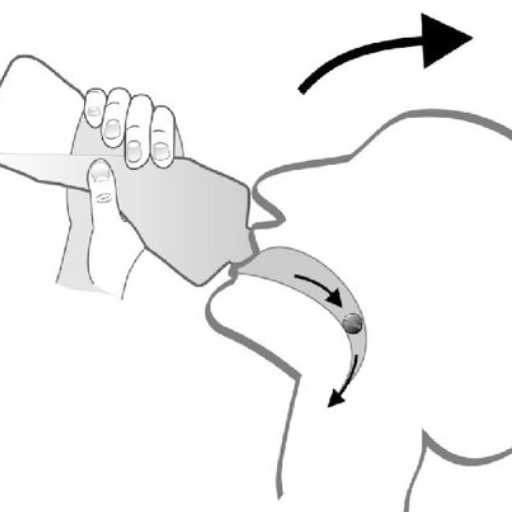 I recommend using some methods that are proven to be effective in helping patients with tablet intake and also assist in minimizing issues associated with pill dysphagia:
I recommend using some methods that are proven to be effective in helping patients with tablet intake and also assist in minimizing issues associated with pill dysphagia:
- Optimize Posture: Have a straight back and have your head slightly tilted forward. Assuming this orientation helps with the smooth movement of capsules down the esophagus,
- Use Sufficient Liquids: Consume a reasonable amount of the water or any accepted liquid to provide lubrication to the throat and allow for easy travelling of the capsule. Other people find it useful to take small sips before taking the pill and after taking the pill.
- Consider Pill Placement: Sit the Pill on the middle part of the tongue or on the tongue towards the back of the throat to minimize the distance that the pill has to travel.
- Try Alternate Methods: Other people prefer the so-called pop-bottle method, which consists in placing the pill on the tongue and closing the lips tightly around the rim of a bottle filled with water, thus drinking from the bottle. The reverse hold technique, which makes use of ‘lean forward’ technique by tilting the head forward after placing the pill inside the mouth.
- Seek Pill Alterations: Speak to your health providers with regard to whether or not liquid formulation, formulation with smaller amounts, or other forms of the medication are available to make swallowing the pills easier.
Proper Positioning for Swallowing Capsules
When using capsules, one must not only look at the dosage but also the position of the head. Here are the parameters to consider while swallowing_kensho:- Sit Upright: Make sure to sit up correctly. This makes it much easier for the capsule to move down the esophagus. Unfortunately, this would not be the case if the individual is slouched as their effective swallowing abilities would not be at peak performance increase the risk of the capsule resorting in the person’s throat.
- Slight Forward Tilt: For better results, gently place your head in a forward tilted position when sitting, rather than backwards. It is a common misconception that tilting the head back would help swallow capsules however it increases the difficulty level in swallowing which is problematic especially when ones head is tilted back when ingesting larger capsules.
- Alignment of the Neck and Head: Neck and head should always be standing in a neutral position and should be straight without facing one side. This positioning comparatively helps in imparting a straight path for the capsule to take.
- Adequate Hydration: To make the capsules easier to swallow, take a few sips of water. This acts to lubricate the throat and mouth and in doing so reduces the friction the capsule would face whilst streaming inside the body.
- Post-Swallow Hydration:With the help of water, one can ensure that swallowing the capsule without it getting stuck anywhere in the body becomes easier to do which allows the capsule to dissolve in the stomach after a short period of time.
The Pop-Bottle Method: How It Helps
I often suggest the pop-bottle method to individuals who have difficulties swallowing pills. The reason why this technique can be advantageous is the following:- Creation of a Pressure Gradient: The act of breastfeeding and sucking a nipple is comparable to placing a tablet on your tongue and then using your lips to seal the mouth of a filled bottle while portioning the fluid into your mouth through the masticated pill. This assists the liquid in funneling through the throat and makes swallowing the pill easier.
- Maintaining Proper Head Position: Using a baby bottle will automatically cause you to move your head slightly forward instead of backward during the draught. This slight movement during the draught also adjusts the position of the esophagus which makes swallowing a smoother process.
- Increased Liquid Intake: With a pop-bottle, the need augments to pour more water into your mouth which was not the case before. This, together with the constant flow of the fluid from the bottle, helps to keep the throat well lubricated enabling most of the pills to be swallowed with ease.
- Engaged Swallowing Motion: To start drinking from a bottle makes me want to swallow, which has a positive effect on anxiety about when to time the swallow. This automatic action is what can enable pills for nausea to be taken without much thought when willing to take them.
Using Applesauce and Other Aids
Using aids such as applesauce makes taking pills easier. Whether it's a positive opinion or not, here's how these methods operate from the perspective of an industry professional:- Consistent Texture: Most educators can appreciate the importance of an appealing diet for swallowing and taking the pill as well. However, one could argue more appropriately that swallowing another form of the apple with a sanding smooth state is desirable, but that would be more accurate so only when taking the bitter-tasting pill itself in its whole or absolute state.
- Masking Taste: one may not like the unappealing flavor of pills and having thin sliced pieces of applesauce can improve flavor. Combining a subtle amount of apple sauce with the necessary amount of the pill may help to get rid of the bad taste.
- Proper Dosage: it is essential to get in touch with your healthcare professional before recommending this approach, as certain injections should be devoid of taste and that in an absolute way as I said before. While pushing the pill back on the upper lip elbow distance across can inch the start of the medication.
- Alternative Aids: In the absence of consuming applesauce, one can use medications with far more complex substitutes such as pudding or eggs. Pill taking eating should begin with parallel movements that get the lips to hug each other and move gently together.
- Portion Control: Way too much of these substitutes will make it difficult to multitask so only stick with a dab, otherwise when taking an applesauce substitute or using it to mixture a hint should suffice in most cases. The primary point should be to facilitate taking the pills without getting choked at any point.
What to Do When a Pill Gets Stuck in Your Throat
 The world of medicine is surely perplexing, and everyone should seek help in case of any issue; if you happen to fall to such an incident where a pill gets stuck in your throat, here are some steps that might help you in dealing with the situation accordingly. The first thing you should do is take deep breaths, as panic can make this even worse. Gulp down some water in an attempt to flush it out due to dryness, and in case that doesn’t work, try some carbonated drinks; this is because of the fizz, which is quite helpful at times to break the bond. In case the options mentioned above don’t respond and the pill is stubborn enough to stay lodged in your throat, for such an occasion, try swallowing some food, maybe a piece of bread or a small quantity of anything that encourages swallowing. In any case, don't try to drink too much water or take other medicines. Now, if the situation gets worse by high discomfort or pain, then make sure to seek the help of medical professionals, as that is your best course of action. All in all, just remember not to panic in these scenarios and have patience instead.
The world of medicine is surely perplexing, and everyone should seek help in case of any issue; if you happen to fall to such an incident where a pill gets stuck in your throat, here are some steps that might help you in dealing with the situation accordingly. The first thing you should do is take deep breaths, as panic can make this even worse. Gulp down some water in an attempt to flush it out due to dryness, and in case that doesn’t work, try some carbonated drinks; this is because of the fizz, which is quite helpful at times to break the bond. In case the options mentioned above don’t respond and the pill is stubborn enough to stay lodged in your throat, for such an occasion, try swallowing some food, maybe a piece of bread or a small quantity of anything that encourages swallowing. In any case, don't try to drink too much water or take other medicines. Now, if the situation gets worse by high discomfort or pain, then make sure to seek the help of medical professionals, as that is your best course of action. All in all, just remember not to panic in these scenarios and have patience instead.
Steps to Take Immediately
the first step with any patient I see with a pill lodged in the throat is to assure them calmly because panicking only aggravates the issue. Then, I suggest they take a sip of water to moisten their throat while swallowing gently multiple times for the pill to go down. In case this does not work, I suggest drinking a fizzy soft drink as it provides bubbles and pressure, which in most cases helps to unstick the pill. If the pill still does not go down, slowly biting a small piece of cracker or bread is good, as it can be sufficient bulk when chewed well to help the pill go down. Most importantly, I always focus on the patients: under no circumstances should they swallow any additional pills until they have successfully swallowed the first. Otherwise, things can turn out to be quite complex. If there is severe pain or blockage of the air passage, then, of course, I always make it a point to go to the hospital at once as there is clarity in the approach of the situation.When to Seek Medical Help
If you are in a situation where a pill becomes stuck in your throat, the greatest rule is to know when you need to go to the hospital. The following are the important ones to assist you:- Severe Pain: If you have pain which is unimaginable and there is difficulty in swallowing followed by no relief even after performing normal techniques to soothe the pain, then you should consult a doctor.
- Difficulty Breathing: Gasping for breath, or feeling choked, in other cases, the airway could be blocked which is a big threat. Therefore, it is critical to have a doctor’s appointment immediately.
- Persistent Stuck Feeling: If you feel the pill is stuck even when you drink water or other forms of soft food then it is best that you visit your doctor for a check-up.
- Gagging or Vomiting: If because of the pill gaging, dry retching, or any form of gaging continues, then this means there is an irritation or blockage in swallowing.
- No Improvement with Common Techniques: If normal techniques like a couple of sips of soft bread or perhaps a fizzy drink fail to do so, then one should try to reach out to a doctor to examine if there are any additional concerns.
- History of Esophageal Issues: If you have a disruption of swallowing, for instance, a spasm, then it makes sense to consult your doctor so further congestion doesn’t cause you.
Can a Pharmacist Help You Swallow Pills?
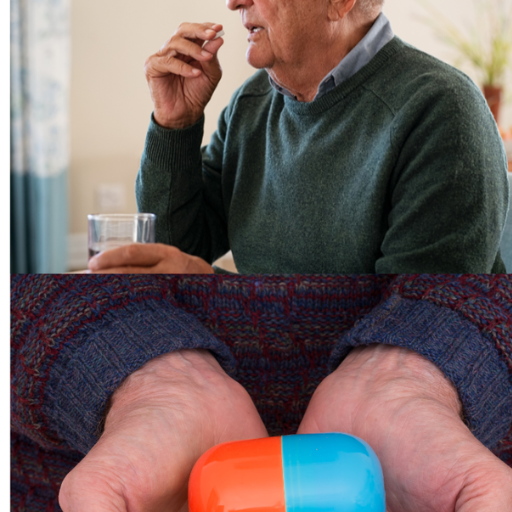 From my earlier argument, which shows why I am the answer to the question of whether a pharmacist can support people with swallowing pills, it is also in my professional experience that pharmacists are trained on how to offer swallowing tips and advice. If, for some reason, swallowing pills is such an ordeal, they might even suggest some other forms of the medication, such as solution or effervescent tablets. Furthermore, they can also explain how to use supportive devices, such as pill Shrinkers, gel caps, or flavored liquids. Whenever in doubt, talk to your pharmacist for advice that compassionately meets your needs and works out well for your health.
From my earlier argument, which shows why I am the answer to the question of whether a pharmacist can support people with swallowing pills, it is also in my professional experience that pharmacists are trained on how to offer swallowing tips and advice. If, for some reason, swallowing pills is such an ordeal, they might even suggest some other forms of the medication, such as solution or effervescent tablets. Furthermore, they can also explain how to use supportive devices, such as pill Shrinkers, gel caps, or flavored liquids. Whenever in doubt, talk to your pharmacist for advice that compassionately meets your needs and works out well for your health.
Advice Pharmacists Can Offer
I would certainly give some pointers on swallowing pills as I am an expert in the industry. I would begin by asking what the role of swallowing even needs to be discussed and whether there are alternatives, such as liquid versions of the medication or dissolvable forms if you're struggling with a particular capsule. Do use the dose cutting pill cutter and do mix with food and drink if necessary I recommend also mixing it with a beverage. The other option is gel caps. Gel caps can sometimes make it easier to swallow pills. As for specific methods for swallowing particular capsules, here’s a sequence that can be useful to you:- Sip of Water First: Start by drinking a little water as this will help in wetting the throat in readiness for the pill. After this, grab a finger and insert it into your mouth to place the pill.
- Position of the Head: When swallowing, some people have a preference to tilt the head a little to either forward or backward. Try both angles and see whichever feels more comfortable.
- Using a Straw: Occasionally, putting the pill into the straw and then swallowing it can be successful because it not only allows one to swallow with ease but also allows the poor cravings of adult strong drinks.
- Pill-Taking Aids: Almost all cough syrup manufacturers offer them alcohol-free and apparently nontoxic enhancers, which can be pregnant-friendly and used to coat the pill.
- Practice with Small Candies: The concept of using finger-sized sweets is a great help, especially for those who are starting out, as this allows one to be comfortable having a real pill without having any desire to get one.
Alternative Forms of Medication
Certainly! Sometimes, addressing the challenges associated with swallowing pills can be as easy as looking for other types of medicine formulations. This is how the problem can be solved:- Liquid Medications: A good number of medicines are made in liquid form for easier consumption instead of having to swallow solid pills, this also guarantees that the proper amount is ingested comfortably.
- Chewable Tablets: For those who find it difficult to swallow a whole large pill, several medicines are formulated into a chewable form which disintegrates in the mouth making it very easy ingested, these medicines are often too flavored to make them more palatable.
- Dissolvable Tablets: Instead of swallowing a large pill, a tantalizing alternative for some medicines are dissolvable tablets, these can be disintegrated in water or simply put on the tongue where it breaks apart rendering the need to swallow useless.
- Topical or Patch Forms: There are other options depending on the type of medication an individual is using, for instance nasal sprays, topical creams or ointments are other available options as it's the same as applying it on skin or inhaling it.
- Injections: Medications can also be given via injection in some cases; although this is mostly done in a clinical setting, it is the best option for those who are unable to take medicines orally.
- Pill Crushers or Splitters: If other means are not available, then you can use a pill crushing device. However, make sure to consult a qualified pharmacist to evaluate if such devices are safe to use for the medication.
Overcoming the Fear of Swallowing Pills
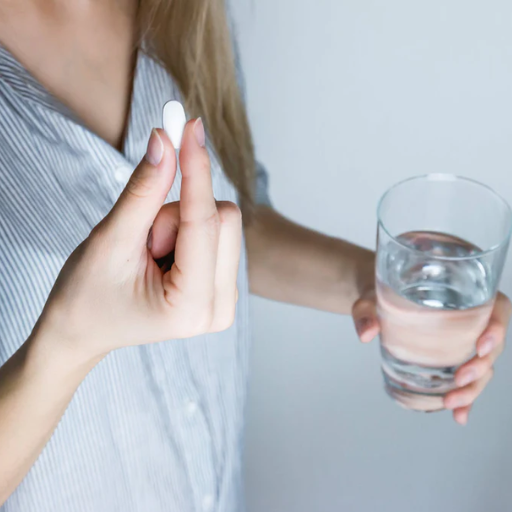 Having practiced at length within the pharmaceutical sector, I recognize that swallowing pills may not be a cup of tea for a considerable number of people. Allow me to take you through some parameters that may assist in combating this fear, progressing step-by-step:
Understanding the Source of Fear It is useful to address this question first: why are you so afraid? Is it perhaps the shape, or the volume, or even the fear of choking? Identifying this will enable you to seek out ways to counter the specific inclination.
Starting Small A good way to start is by swallowing very small pieces of food like peas or small candy. This lets you gain some confidence without the use of actual medication and it would be a good way to get used to bigger sizes gradually.
Using Water as a Tool As strange as it may sound, water is definitely so much useful. One sip of water prior to attempting to ingest a pill dryes, and wetens the oral cavity along with the throat, making the whole process smoother.
Adjusting Head Position With minimal effort and with what seems most comfortable, try tucking your head in forward or inhibitor slip of water. Both of those angles may help steer the pill down smoother, so find what works best for you.
Creating a Calming Environment Anxiety is often a barrier to successful swallowing. This is why it is recommended to take pills in serene conditions whilst avoiding visual or audio interruptions so as to concentrate better on swallowing.
Breathing Techniques It has been demonstrated that deep breathing helps to further relax the body and mind, engagement in such practice prior to attempting swallowing will help in making the process less stressful.
Considering those specifics, the phobia of taking pills can be systematically approached in a manner that ensures ease and eliminates strain. For this, it is necessary to have some patience and do some practice, and also make sure to consult a pharmacist for more specific directives.
Having practiced at length within the pharmaceutical sector, I recognize that swallowing pills may not be a cup of tea for a considerable number of people. Allow me to take you through some parameters that may assist in combating this fear, progressing step-by-step:
Understanding the Source of Fear It is useful to address this question first: why are you so afraid? Is it perhaps the shape, or the volume, or even the fear of choking? Identifying this will enable you to seek out ways to counter the specific inclination.
Starting Small A good way to start is by swallowing very small pieces of food like peas or small candy. This lets you gain some confidence without the use of actual medication and it would be a good way to get used to bigger sizes gradually.
Using Water as a Tool As strange as it may sound, water is definitely so much useful. One sip of water prior to attempting to ingest a pill dryes, and wetens the oral cavity along with the throat, making the whole process smoother.
Adjusting Head Position With minimal effort and with what seems most comfortable, try tucking your head in forward or inhibitor slip of water. Both of those angles may help steer the pill down smoother, so find what works best for you.
Creating a Calming Environment Anxiety is often a barrier to successful swallowing. This is why it is recommended to take pills in serene conditions whilst avoiding visual or audio interruptions so as to concentrate better on swallowing.
Breathing Techniques It has been demonstrated that deep breathing helps to further relax the body and mind, engagement in such practice prior to attempting swallowing will help in making the process less stressful.
Considering those specifics, the phobia of taking pills can be systematically approached in a manner that ensures ease and eliminates strain. For this, it is necessary to have some patience and do some practice, and also make sure to consult a pharmacist for more specific directives.
Psychological Techniques to Reduce Anxiety
I grasp that the management of the anxiety associated with swallowing pills is multifaceted, as it entails both psychological and practical strategies. Here are a few simple physical practices aimed at managing anxiety:- Visualization and Mental Imagery: Have an image of you perfectly swallowing a tablet with no difficulties. If you do so, you are able to use mental visualization to prepare your mind for the task. Think about yourself peacefully going through the entire process.
- Gradual Exposure: In a similar manner to starting off with food items, one can try to slowly work the idea of swallowing pills and subsequently make the anxiety fade away. Start out by grabbing the pills, then placing them in your mouth without swallowing, and then go to the last one where you place the pills in your mouth add water,r and swallow it.
- Positive Reinforcement: After being able to do the smallest task, give yourself a reward, it can be anything as small as a dessert or a moment of peace. Positive reinforcement allows an individual to associate positive notions with the task.
- Cognitive Restructuring: Try to challenge yourself and replace those thoughts which are encouraging you that pill swallowing is bad, for instance, fear of choking. Replace them with positive self-affirmation or realistic statements about how you can easily swallow.
- Mindfulness and Relaxation Techniques: Try to do some visualization exercises to keep you cool and focus on the process at hand. You can incorporate things such as deep focused breaths, meditation or progressive muscle relaxation which in turn drastically lowers anxiety levels and gets you into a calm state.
- Professional Support: Getting in touch with an anxiety therapist at times can be beneficial since it will provide the individual with more mechanisms to cope with their anxiety.
Practice Methods for Easing the Process
I would recommend focusing on the effective integration of methods with respect to practicing the swallowing of pills in a structured way, which reduces discomfort and, at the same time, accelerates the rate of adaptation. To start, choose a specific time on a daily basis with the aim of reducing variability and increasing practice regularity. Use aids such as pill cups which can assist positioning and coordination during swallowing. Try using postures that are comfortable for the individual while integrating techniques such as the ‘pop-bottle’ method or the lean-forward method, which helps aid in the adaptation. Set small initial ambitions in order to improve confidence and skill over time, such as starting by swallowing small nonharmful objects, such as gel caps that have water in them, before taking medication. Taking water, as well as practicing frequently, makes it easier to learn and allows the throat and esophageal muscles to get used to the feeling of swallowing. It is best to always involve physicians to ensure the safety and suitability of methods employed according to individual circumstances.Reference
- Harvard Health Blog: Two tricks to make it easier to swallow pills
- University of Mississippi Medical Center: Tips to Make Swallowing Pills Easier
- Michigan Medicine: How to help kids swallow pills in 7 easy steps
Frequently Asked Questions (FAQs)
Q: Why do some people have difficulty swallowing pills?
A: Many people have difficulty swallowing pills due to fear of choking, a sensitive gag reflex, or simply finding it hard to swallow solid objects. Psychological barriers and lack of practice can also contribute to trouble swallowing pills.Q: What should I do if a pill gets stuck in the throat?
A: If a pill gets stuck in the throat, try drinking a large glass of water to help wash it down. If the pill is still stuck, try swallowing a small piece of bread or eating a spoonful of applesauce to help move it along. If you continue to have problems, seek medical attention.Q: Are there techniques to make it easier to swallow pills?
A: Yes, there are several techniques to make it easier to swallow pills. You can try placing the pill on the tip of your tongue, then swallow the water and pill together using a sucking motion. Tilting your head forward slightly as you swallow can also help.Q: Can certain foods or liquids help when having a hard time swallowing pills?
A: Yes, taking pills with thicker liquids like smoothies or applesauce can help if you have a hard time swallowing pills. These substances can help the pill glide down more easily than water alone.Q: What if I find it hard to swallow pills even with water?
A: If you find it hard to swallow pills even with water, try using a different method, such as the pop-bottle method, which involves placing the pill on your tongue and closing your lips around the opening of a bottle of water. Swallow the water quickly, using a sucking motion, to help the pill go down.Q: How can I prevent a pill from getting stuck in my throat?
A: To prevent a pill from getting stuck in your throat, ensure you drink plenty of water before and after taking the pill. Try to relax and avoid rushing the process. Position the pill on the tip of your tongue and swallow with a sufficient amount of water.Q: Is it okay to crush or split pills if I have trouble swallowing them?
A: Some pills can be crushed or split, but not all medications are safe to alter. It's important to consult your pharmacist or healthcare provider before crushing or splitting any medication to ensure it's safe and won't affect the efficacy of the medication.Q: Can a speech-language pathologist help with swallowing problems?
A: Yes, a speech-language pathologist can help with swallowing problems. They can provide exercises and techniques to improve your swallowing function and make swallowing pills easier.Q: Why do pills sometimes need to be taken on an empty stomach?
A: Some pills need to be taken on an empty stomach because food or certain liquids can interfere with the absorption of the medication, reducing its effectiveness. Always follow the instructions provided with your medication.Q: What should I do if I continue to have a hard time swallowing pills?
A: If you continue to have a hard time swallowing pills, consult with your healthcare provider. They may recommend alternative forms of medication, such as liquids or chewables, or refer you to a specialist for further evaluation.1033




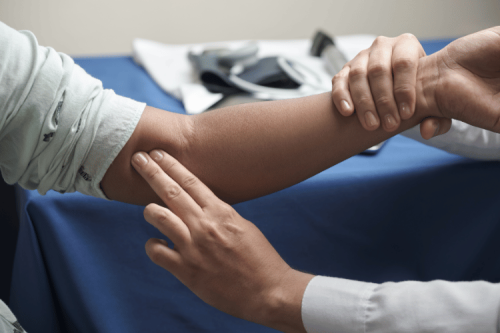
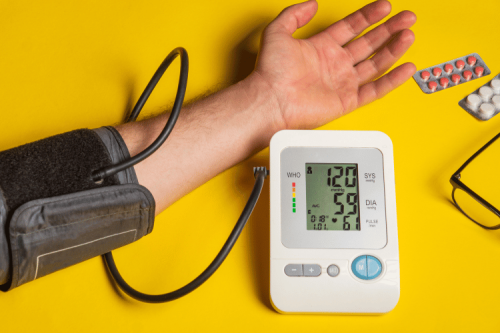
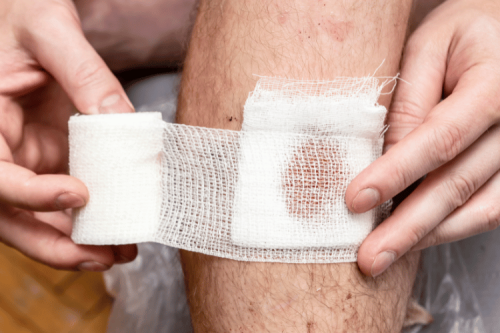

 Login with Google
Login with Google Login with Facebook
Login with Facebook